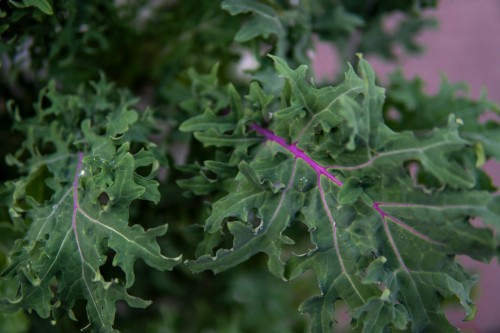Kale
A Complete Guide to growing kale in the UK.
Introduction
Kale has enjoyed a resurgence in popularity thanks to its versatility, nutrition, and ability to thrive in the UK climate. A hardy brassica, it tolerates cold weather and often improves in flavour after frost, making it one of the best winter greens. With a wide range of varieties-from curly to flat-leaved, dwarf to tall-kale can be harvested over many months. It’s easy to grow in beds, borders, or containers and provides a reliable crop when other vegetables are scarce.
Types and Timing
Kale varieties vary in flavour, leaf shape, and season:
Curly kale: Classic, frilly leaves in green or purple (‘Winterbor’, ‘Redbor’).
Cavolo Nero (Tuscan kale, black kale): Tall plants with long, dark, strap-like leaves.
Dwarf kales: Compact, ideal for windy sites or smaller spaces.
Russian kales: Flat, tender leaves with reddish tinge, often sweeter.
Timing:
Sow indoors from March to May.
Direct sow outdoors from April to June.
Plant out seedlings from May to July.
Harvest from autumn through to spring, depending on variety.
Site and Soil Requirements
Kale is undemanding but benefits from fertile, well-prepared soil:
Light: Prefers full sun but tolerates partial shade.
Soil: Moist, fertile, and well-drained. Add compost or well-rotted manure before planting.
pH: Neutral to slightly alkaline-lime the soil if very acidic to reduce clubroot risk.
Containers: Can be grown in large pots (30 cm+) with rich compost.
Propagation & Planting
Sowing indoors: Sow in modules or pots 1 cm deep, then transplant when seedlings are 7-10 cm tall.
Direct sowing: Sow in drills 1 cm deep, thin to 7-10 cm apart, then transplant to final positions.
Spacing: 45 cm between plants, 60 cm between rows (dwarf types can be closer).
Transplanting: Plant deeply and firm soil around roots to prevent rocking in the wind.
Succession: Sow every few weeks until mid-summer for staggered cropping.
Growing & Maintenance
Watering: Keep soil evenly moist, especially in dry spells, but avoid waterlogging.
Feeding: A nitrogen-rich liquid feed during summer encourages leafy growth.
Mulching: Retains moisture and suppresses weeds.
Weeding: Essential to reduce competition for nutrients.
Protection: Use netting to protect from pigeons and caterpillars.
Harvesting leaves: Pick outer leaves regularly to keep plants producing new growth.
Harvest and Post-Harvest
Timing: Harvest from September through winter, often lasting into March.
Picking method: Harvest outer leaves as needed (“cut-and-come-again”), leaving the central bud to keep producing.
Frost benefit: Cold weather sweetens the leaves.
Storage: Best eaten fresh but can be stored in the fridge for up to a week. Blanch and freeze for long-term use.
Cooking: Use in soups, stir-fries, steamed, or baked into crisps.
Troubleshooting & Pests
Cabbage white butterflies: Caterpillars strip leaves-use fine mesh netting.
Pigeons: Can devastate crops-protect with netting or fleece.
Clubroot: Soil-borne disease causing swollen roots. Prevent by liming acidic soil and rotating crops.
Aphids: Gather on young leaves-squash, wash off, or encourage predators.
Bolting: Hot, dry conditions may cause early flowering-keep plants well watered.
Tips from Growers / FAQs
Best for beginners: Curly kale is hardy, productive, and forgiving.
Winter harvests: Cavolo Nero withstands frost well and looks striking in the garden.
Continuous supply: Grow a mix of early, main, and late varieties for harvests spanning 6-8 months.
Cut-and-come-again: Regular picking prolongs productivity and keeps plants tidy.
Container growing tip: Use dwarf varieties for pots, feeding every few weeks for best results.
Resources & References
RHS: Grow Your Own Kale
BBC Gardeners’ World: How to Grow Kale
© What to plant 2025. All rights reserved
